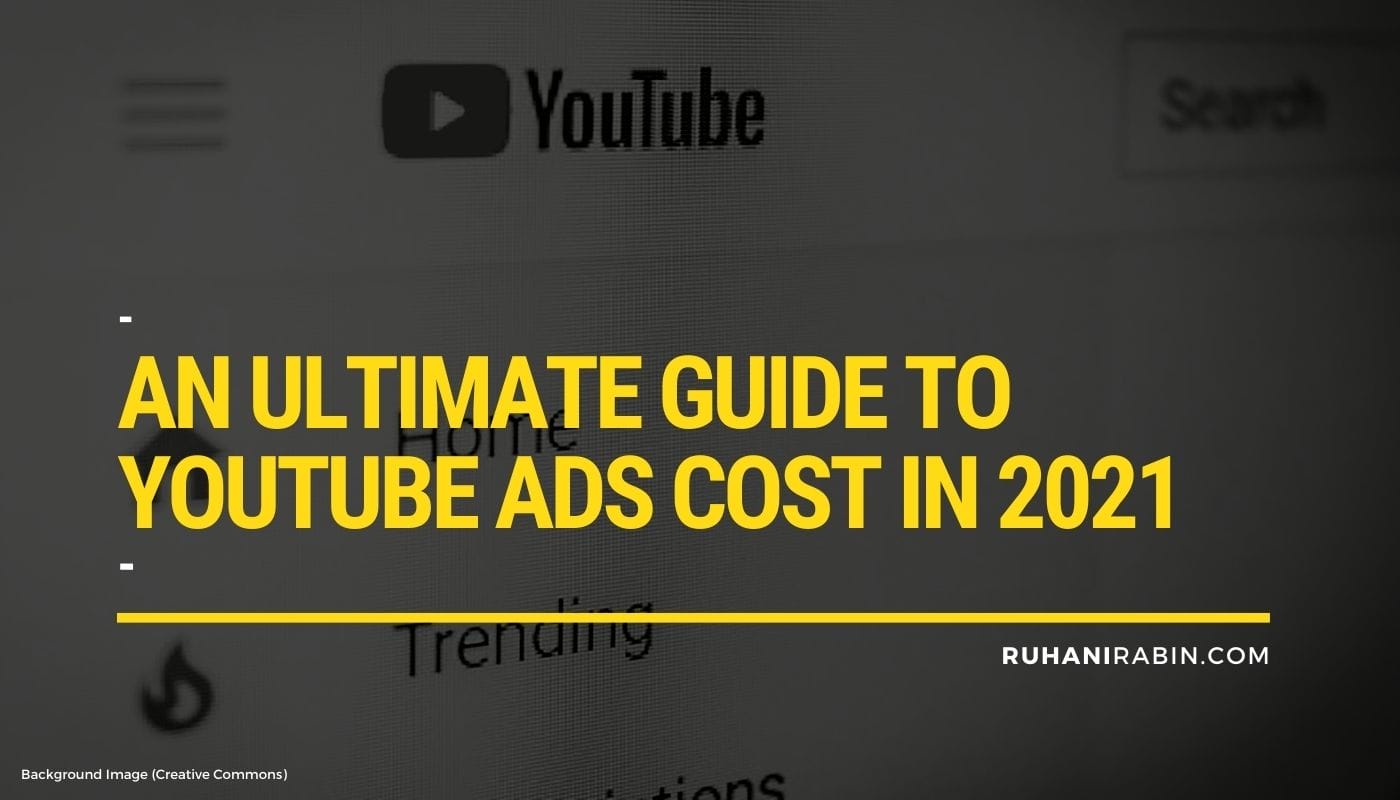An Ultimate Guide to Youtube Ads Cost in 2021
Many marketing advisors recommend using Youtube for small business marketing and in this article, we are going to discuss why. We would also like to talk about YouTube ads cost in 2021 and the amount to spend on Youtube ads campaigns.

While marketing forecasts for each year always say that this year will be “the year of video,” don’t be confused by assuming that video is just a marketing buzzword.
Many marketing advisors recommend using Youtube for small business marketing and in this article, we are going to discuss why. We would also like to talk about Youtube ads pricing in 2021 and the amount to spend on ads campaigns.
Get the Best Updates on SaaS, Tech, and AI
Why should you advertise your service or product on YouTube?
YouTube is one of the top search engines in the world and is growing in 2021. You’re probably missing out if you’re not using this popular video channel to advertise your brand to prospective buyers.
Even if you have a cost-effective promotional strategy, you might still have concerns about the effectiveness of their advertisements. You should have a clear target in mind when advertising on YouTube.
The below are the two explanations why companies advertise:
- Boost brand recognition
- Increase page traffic
Here’s an example of how ads can help with your business success. You may want to raise your brand awareness locally.
If you own an Android application development company in Australia you can run an advertising campaign on Youtube. This way you can choose the country of your ad viewers as Australia. It not only increases your local brand awareness but also drives traffic to your company website.
Aside from providing a large scope of viewers, YouTube also provides advertisers with access to sophisticated targeting and monitoring programs. Marketers will reach customers based on demographics, location, and online behavior. Then they can simply monitor and evaluate the success of their campaigns.
How Much Should Companies Spend on YouTube Ads Cost?

Most companies spend at least $10 a day on their YouTube promotional campaign. Companies can increase their spending when they see its merit. However, these are just average figures, and the exact figures of Youtube ads cost differ depending on the sector. The costs also vary for each type of advertisement on Youtube.
The estimated cost-per-view (CPV) for YouTube advertisements is between $0.03 and $0.30. Views provided by YT advertisements will be counted against your overall views on YouTube. The estimated cost of reaching 100,000 people is about $20K.
CPM, or Cost per Mille, represents the amount of money that YouTube marketers can spend for 1,000 advertisements. For example, if you choose to spend $1,000 in an ad advertisement that receives 370,000 views, the CPM is $2.70 ($1,000/370,000) x 1,000 = $2.70). On YT, the average cost per mille is $2.
So, let’s check other types of Youtube ads to see how Youtube charges advertisers based on each ad format:
Youtube Ads Types

Throughout the history of social media, many social platforms have been transformed their advertising formats. There are a variety of ad types on Youtube to choose from based on your strategies and goals.
Ads are divided into five major categories and a few subcategories, as follows:
1. Ture View
This method of advertisement benefits both you, the advertiser, and the audience. They are built on Google’s commitment to only charge you if someone watches your video. TrueView commercials offer the user the choice of watching or not watching.
There are two Trueview ad subcategories; in-stream, and video discovery ads. Viewers in True View advertising can only watch content that they are interested in or curious about.
True View In-stream Ads
These are the advertisements that appear before or after a YouTube partner’s video. Viewers watch the commercial for 5 seconds before deciding whether to miss it or continue viewing.
You are charged as the audience watches the commercial for at least 30 seconds. If the user clicks on a card or either of your promotional options on the in-stream advertisement, you should still be charged.
True View Discovery Ads
When a user looks for something, TrueView content discovery ads appear alongside other YouTube videos. You just pay if the user clicks on your ad and decides to see it.
2. Skippable in-stream ads
The most popular kind of YouTube ad is skippable in-stream video advertising. These are advertisements that appear before, after, or after videos and can be skipped after 5 seconds.
Viewers who see these kinds of commercials have the option of skipping the commercial or continuing to watch. You are charged as the audience watches the commercial for at least 30 seconds.
3. Non-skippable in-stream ads
Non-skippable in-stream commercials are those that audiences must watch before seeing the main clip. There is a longer format with 30-second commercials, but YouTube may discontinue them due to their lack of popularity.
Without the option of skipping, the length of the video is normally 15-20 seconds. Bumpers ad is a subcategory of non-skippable in-stream YT ads.
Bumper Ads
YouTube bumper commercials, which are up to 6 seconds long and cannot be disabled, are another form of video that the audience must watch before viewing the main video.
4. Discovery ads
The Google Adwords framework is somewhat similar to discovery advertising. They are shown to the viewer in addition to other search results. Users may opt to watch your videos if they seem to be appropriate.
Their format is built on a thumbnail and three lines of text that accompany it. When YouTubers click on it, they will be guided to your video or channel.
5. Non-video ads
Youtube ads are not just in video format, as there are non-video ad types available for advertisers to choose from. Sponsored cards, display ads, and overlay ads are subcategories of Youtube non-video ads.
Conclusion
Now you know the types of Youtube ads, and why many companies promote on Youtube, so it’s time to decide. Depending on your social media marketing strategy in 2021 you can choose the right advertisement type that suits you.
The good news is that there are ad format options and no limitations in terms of minimum budget. So, you have maximum freedom and flexibility for your Youtube ads cost planning in 2021.
Ayla Anderson is an enthusiastic blogger and marketing expert whose current interest is website and app development, digital marketing, mostly SEO. Therefore, she works part-time as a consultant for 10 top web design companies, a digital marketing agency from Ukraine. She spends her spare time reading books and traveling. You can follow her on Twitter.
FTC Disclosure: The pages you visit may have external affiliate links that may result in me getting a commission if you decide to buy the mentioned product. It gives a little encouragement to a smaller content creator like myself.


